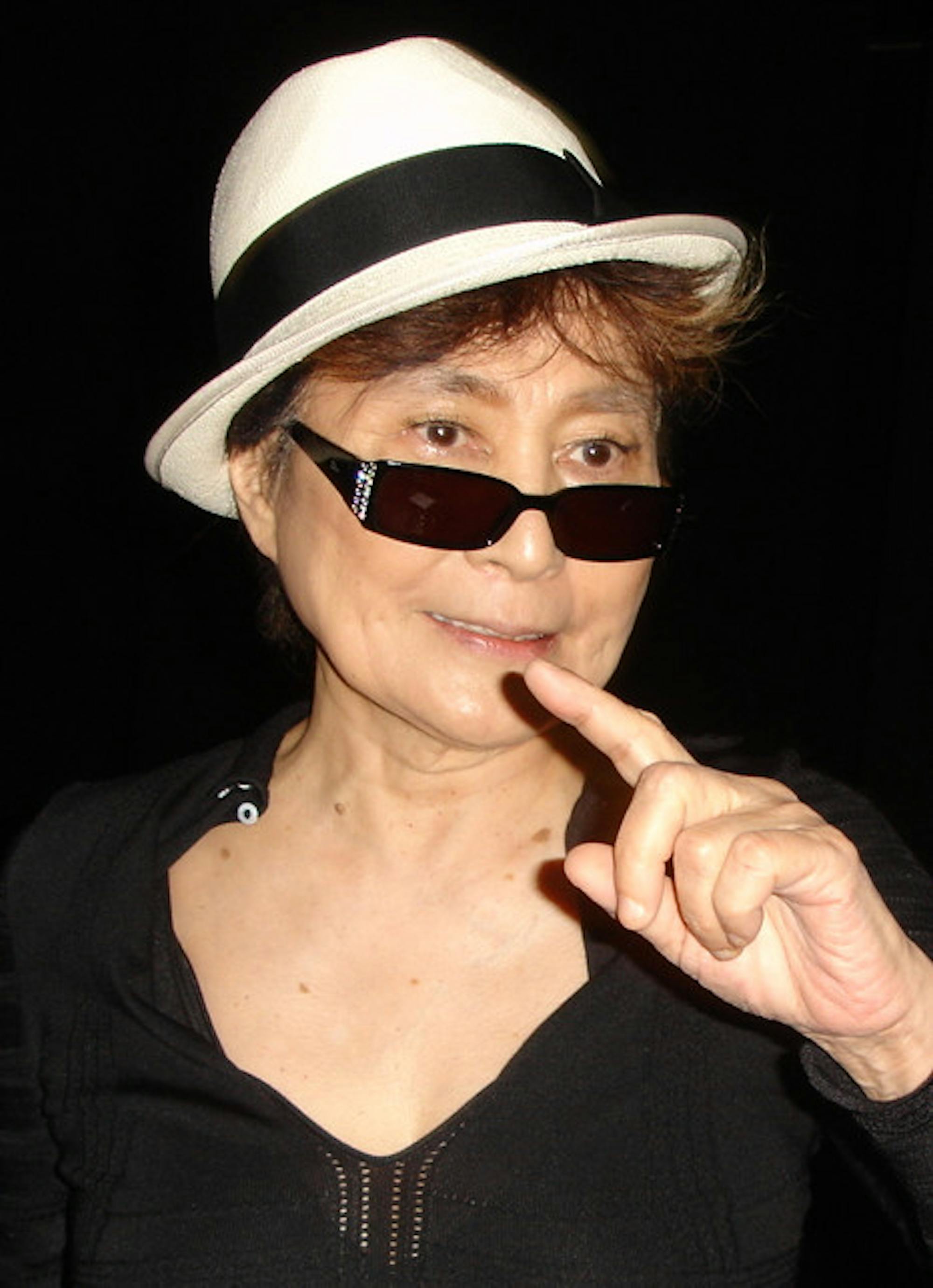Seemingly everything is “a little different this year.” As we prepare for the first Valentine’s Day in a pandemic, we should not despair at the modified traditions and instead learn from the liberated work of Yoko Ono, a woman who embraced the unconventional in her art, compelling her audience to engage with the strange, beautiful and disturbing elements of life in ways that make the mundane feel unexpected.
An influential member of the Fluxus art movement, Ono helped pioneer a genre of conceptual art consisting of performative instructions that emphasize artistic process and replicability. These works empower anyone to act out a work of art or merely imaginatively engage with the poetic instructions. Many of these works, known to Ono as “scores,” were published in her 1964 collection “Grapefruit” and made widely available in cheap pamphlets.

Born in 1933, Ono witnessed the atrocities of war in ways that would define her future art and activism. Facing extreme hunger during World War II, she began cultivating her creative imagination to distract from her hunger. Ono recounts this trying period in her life in Alexandra Munroe’s book “Yes, Yoko Ono”: “Lying on our backs, looking up at the sky through an opening in the roof, we exchanged menus in the air and used our powers of imagination to survive.” Just as it is impossible to eat imagined food, Ono’s work is often conceptual and impossible. “Fly Piece,”for example, just reads “Fly.”
“Laundry Piece” (1963)
“In entertaining your guests, bring out your laundry of the day and explain to them about each item. How and when it became dirty and why, etc.”
Works such as “Laundry Piece” are relatable and elevate the mundane drudgery of every day to an individual form of art — the perfect accompaniment to a year spent indoors. The beauty of these scores is that they exist beyond the walls of closed museums, perpetually reanimated in the imaginations of readers or through their active recital.
“Lighting Piece” (1955)
“Light a match and watch it till it goes out.”
A largely absurdist art form, these scores take on new meaning in a world of uncertainty where daily exigencies feel surreal. “Lighting Piece”and “Wall Piece”read like the stir-crazy journal entries of someone in isolation due to a COVID-19 scare. Many of these artworks are tasks, things to do, means of escape and entertainment, while others address topics of death or encourage screaming into the wind. By their performative, replicative nature and status as “art” (and thus worthy of contemplation), Ono’s pieces demand the reader-participant explore new ways of understanding the world.
Ono ventured beyond a celebration of the inane, boldly addressing issues relating to sex and gender through the same ephemeral medium of a participatory audience. “Cut Piece” (1964) instructs a performer to sit on stage, motionless, as the audience is invited to cut away a piece of the performer’s clothing one by one. While Ono initially framed the piece as an act of giving herself to the audience, she did so “to see what they would take,” reclaiming power as a female performer by offering her body to the public on her own terms.
Ono’s 1996 film, “No. 4,”consists of a series of closely-shot posteriors. Degendered and reduced to objects, the bottoms are largely desexualized and normalized as a natural anatomical feature all humans have in common. If the viewer chooses to sexualize the film, they are faced with a new dilemma: the ambiguous gendering subverts the presumed heterosexuality of the viewer, challenging them to examine their concept of sexuality.
Perhaps Ono’s best-known work, however, is one for which she is largely uncredited. “Imagine” is synonymous with the free-love radicalism and collectivist sentiment of hippie counterculture and was credited solely to John Lennon until 2017. Lennon himself said in a BBC interview that the song was “right out of ‘Grapefruit’’’ with the “lyric and concept” coming from Ono.
Ono’s career is not without controversy. “No. 4”was banned in the United Kingdom upon release. In addition to being considered radically feminist, “Cut Piece”has been called anti-feminist for its objectification of women (though Ono has specified that the performer may be of any gender and the work ends at the artist’s discretion). Ono has also drawn criticism for a song she recorded with John Lennon, which compared the experience of women with that of Black people in a song with an unprintable title. Far less deservedly, she is widely blamed for breaking up the Beatles through what Paul McCartney referred to as her influence over John Lennon as a “strong woman.”
Although her relationship threatened to be defined by her husband’s career, Ono used their combined star power to gain an audience for her anti-war activism. She and Lennon staged “bed-ins” in lieu of a honeymoon where they invited the press into their hotel room at the Hilton Hotel in Amsterdam and later the Queen Elizabeth Hotel in Montreal to advocate for world peace. She continues to draw on their connection with her advocacy and personal website imaginepeace.com.
“Wall Piece for Orchestra To Yoko Ono” (1962)
“Hit a wall with your head.”
Ono’s work, for all its controversy and subversive messaging, is largely grounded in replicable, personal connections to art. Through its interactive nature, her work democratizes artistic experiences, taking art beyond the rigidity of a gallery to question broader issues of political culture while empowering anyone to engage with art.
While dinner may be off this Valentine’s Day, you can still go to a show. Make your roommate or significant other sit while you explain how your clothes got dirty. Feeling risque? Try “Cut Piece.” Alone this holiday? Light a match and watch till it goes out. Better still, advocate for something you care about or simply imagine the world you want. If all else fails, I suggest “Wall Piece for Orchestra.”
Ono turns 88 on Feb. 18.




